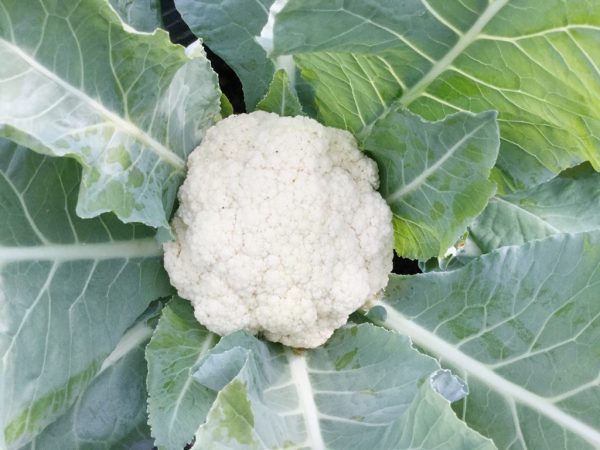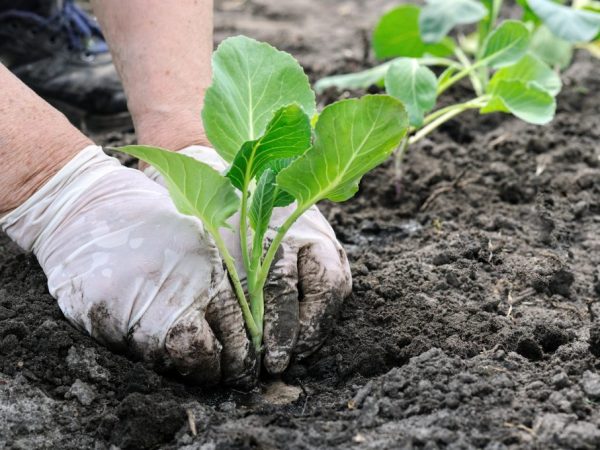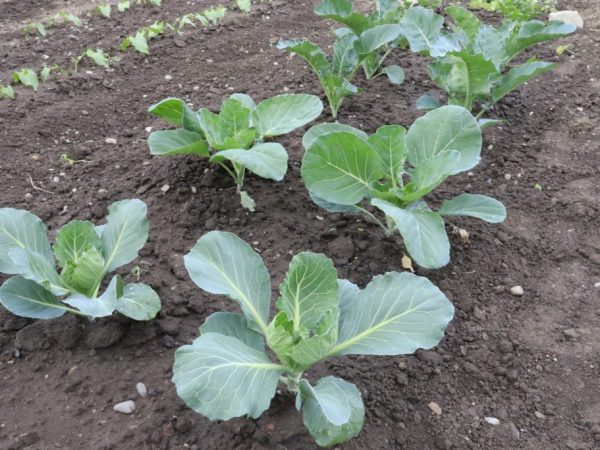Growing cauliflower outdoors
Cauliflower grows best in the open field: this way it gets maximum sunlight and the necessary nutrition. In closed conditions, such a vegetable can also be grown, but the yield will be lower.

Growing cauliflower outdoors
Vegetable characteristic
Cauliflower is a plant with a cylindrical stem and a root system close to the surface of the earth. The vegetable is characterized by a horizontal arrangement of leaves. The main fruit is the polyspermous pod. Peduncles and heads are used for food.
Useful properties of the plant
The vegetable contains many useful substances. The peculiarity is that the leaves contain more iron than marrow or bell pepper. The presence of vitamins and minerals in the composition helps to strengthen the immune system and provide the body with antioxidant protection. Enzymes help eliminate toxins.
The vegetable is easy to digest and assimilate. Doctors recommend it for gastritis and liver problems. Cabbage is also useful for diabetics. It restores the necessary cholesterol levels.
Growing features
Caring for cauliflower outdoors requires special rules. The culture is sensitive to temperature and humidity and also requires a lot of sun color. The slightest lack of one of the factors leads to the disintegration of the peduncle head. A sufficiently long growing period forces gardeners to be as careful as possible when planting cauliflower in open ground or caring for it.
There are 3 main varieties of cauliflower:
- Early. Planting seedlings begins from mid-April to early May. Plant the plant in the ground - in the middle or end of March. Such varieties are Snowdrift, Snowball, Maliba, Amethyst.
- Medium late. It is planted throughout May and early June. Planting seedlings begins from mid-April to early May. These varieties include Lilac ball, Yako, Otechestvennaya, Flora Blanca
- Late. It is planted in early July. They begin to grow from the beginning of June. This includes the varieties of Cortes, Amerigo, Consitu, etc.
Growing seedlings from seeds
Before planting, the seeds are processed:
- placed in warm water for 12-13 minutes, and then cooled;
- clean the surface of the seeds;
- put in the refrigerator for 1 day.
After processing, the seeds are planted two at a time in separate containers. Drainage is placed at the bottom, only then the soil is laid. It includes:
- 4-5 parts of low-lying peat;
- 1 part mullein;
- 1.5 parts of sawdust.
To nourish the seeds, a substrate of humus, sand and peat is introduced into the soil, you can use a little wood ash. Landing is carried out at a depth of 5 mm.
There is one secret to increasing the cold resistance of the fetus. A few days before planting, the soil is fed with a solution of phosphate and potassium chloride with water.
Conditions for planting cauliflower in open ground

Plants need sunlight
Seedlings must be grown at 17-22 ° C. The soil is constantly loosened and watered. For prevention, plants are treated with a solution of potassium permanganate. When the first true leaves are formed, a boric acid solution is used.
A pick is made. When the seedlings are 2 weeks old, they are seated in separate boxes. Further cultivation is carried out at a temperature of 20 ° C.
Soil preparation
A correctly chosen piece of land is one of the growing conditions. The cauliflower planting soil is carefully prepared. Growing cauliflower outdoors is only possible with sufficient sunlight.
Best of all, if last season they grew on the site:
- potatoes;
- bow;
- garlic;
- carrot;
- siderates.
It is forbidden to plant cabbage after:
- tomatoes;
- radish;
- beets;
- cabbage.
The soil is dug up in the fall onto the bayonet of a shovel. In the spring, the soil is enriched with useful substances using humus or compost. A little ash and urea are placed in each hole.
Cabbage planting technology
Landing technology also has features and requires compliance with the rules. For successful cultivation, a plot scheme is used so that the distance between the holes is 35-40 cm, and between the rows - 50 cm. Planting is carried out so that the real leaves are on the surface. To protect against frost, in the first stages, the plants are covered with plastic wrap. They also protect cabbage from cruciferous fleas.
Planting of cauliflower seeds in open ground begins in mid-April. If the climate is cold, it is better to grow by seedling method.
Outdoor Cauliflower Care

The plant needs good care
It is difficult to grow a culture because of the moodiness in relation to the climate and the sun. To obtain a large amount of harvest, you need to monitor the condition of the plant. When caring for cauliflower in the open field, the following actions are used:
- loosening the soil;
- regular watering;
- hilling;
- weeding the site;
- treatment for diseases and pests;
- top dressing.
Water it 1-2 times a week. The initial water consumption is 8 liters per 1 sq. m. With the development of the fetus, the flow rate increases. With regular rains, you should not be zealous with watering. Too much moisture causes fungal diseases in the plant. 3 leaves of the plant are broken up to retain moisture. It also helps with dark spots.
Processing and feeding
It is possible to protect a plant from pests without pesticides. The best way to control insects is to use wood ash. Tobacco is used as an alternative. A solution of onion husks and burdocks has a good effect. It is applied to the crop by spraying.
It is almost impossible to fight diseases without drugs. To prevent their appearance, all growing rules are observed.
Top dressing is carried out 3-4 times. The best remedy is mullein. 0.5. l of liquid is diluted in 10 l of water. One plant is about 0.5 liters of solution.
The first feeding is done 3 weeks after planting. The second is done in 10-12 days. To enhance the effect, add a spoonful of crystalline to the mullein solution. The third feeding is done with mineral fertilizers. The most popular remedy is Nitrofoska. To prepare the solution, you need 10 liters of water and 2 tbsp. l. fertilizers. They spend at least 6 liters per square meter. m.
Cleaning
The main signs of fruit ripeness:
- Head size. Ripe fruit reaches 9-12 cm in diameter.
- Fruit weight. A ripe head weighs more than 300 g.
Early crop varieties reach maturity in 60-90 days, depending on weather conditions. Mid-late varieties are grown for at least 100 days. Late varieties ripen for about 5 months. The vegetable should not be allowed to overripe: it will lose both taste and useful qualities.
Cutting is carried out carefully, leaving 3-4 leaves on the head. Do not cut off all the side shoots: if you leave a few of the largest ones, new inflorescences will appear.The cut heads are immediately removed from the sun. If this is not done, they will become unusable.
Storage
The best storage place is the cellar. Plastic crates are also suitable. They can be stored under the film for 2 months.
An alternative to the cellar is freezing. The fruits are washed with water and dried. Before freezing, the plant can be boiled slightly. Cabbage is stored in this form for a year.
The plant can be stored suspended, but in this case, you do not need to cut the inflorescences. You only need to remove the roots and upper leaves. The fruit is tied by a stump and suspended. Plants should not touch each other. In this form, the vegetable is stored for a month.
Growing
If the cabbage has not reached maturity in the garden, it is grown at home. For convenience, this is done in the cellar. After reaching ripeness, it is stored there.
2 days before digging, the cabbage is well watered. When digging up, it is important to keep the root intact and with plenty of soil on it. Several boxes of soil from the garden are brought into the cellar and the culture is transplanted there.
Provide good ventilation in the room. The temperature should be slightly over 0 ° C, and the humidity should be around 95%.
Conclusion
Planting cauliflower in open ground in the country is carried out only if it is possible to provide normal plant care. For open ground, early ripening varieties are used. So the fruits will be smaller, but the plant ripens much faster. In the middle lane, varieties are chosen that are resistant to changes in temperature and humidity.


